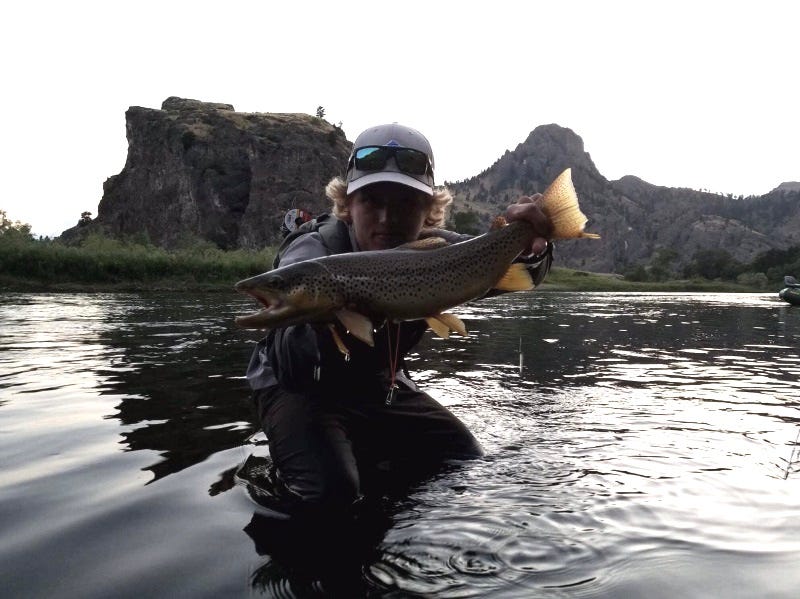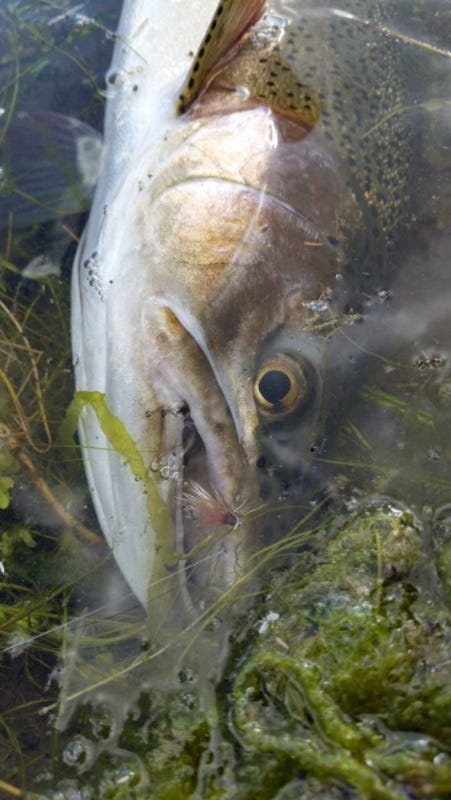Missouri River Fishing Report 7.13.2017

 It’s now mid-summer and we are coming into another heat wave. River flows have fallen to the 4K range. It’s almost like an entirely different river than it was a few short weeks ago. The good news is fish are rising regularly in the skinny flows. Caddis and Trico’s are the primary bugs, though PMD’s are still a player. Caddis hatches and evening egg laying flights have been great.
It’s now mid-summer and we are coming into another heat wave. River flows have fallen to the 4K range. It’s almost like an entirely different river than it was a few short weeks ago. The good news is fish are rising regularly in the skinny flows. Caddis and Trico’s are the primary bugs, though PMD’s are still a player. Caddis hatches and evening egg laying flights have been great.
Check out our selection of dry flies online here.
Trico hatches and spinner falls are now a standard morning occurrence. Early bird anglers are getting them on Trico duns and then shifting to spinners during the 9-10 a.m. fall. By late morning, the water is covered with a slurry of tricos, PMD’s and spent caddis. There are lots of bug parts for fish to slurp. PMD spinners, rusty and otherwise can spark some eats. Spent caddis are always a good choice. Sometimes a Buzzball, Griffiths Gnat or Midge Cluster can get them when they are rising in the slow sloppy waters.

Often you will see fish dimpling the surface, sucking in bug parts. Periodically, you will see a big splashy eat. Down went a caddis. When they see a caddis, they eat it like they mean it. Hopefully, it will be one attached to your tippet.
We've got caddis dries and tippet... both online here.
Nymphing remains very good for at least a portion of the day. Most of the river traffic is focused up by the dam, but as long as you are out early, the fishing can be strong river wide. Once the sun gets high and the fish have been floated over a few times, it can get a bit scratchy. Now that the water is low, fish are more aware of fly lines and bobbers slapping down. Contrary to popular belief, Nymphing is not always easy nor can you simply hang flies from an indicator and expect to be in fish all day. In many places, some level of stealth is required.
Often, the most consistent water for Nymphing success is the most turbulent. Work the broken riffled water, the fast roily seams and the hydraulically disturbed points and eddies. Lots of food swirls around under the surface in those places and the fish don’t have clear vision like they do in smoother flows. When the water is disrupted and the currents constantly shifting, fish are forced to react quickly. This means they more often mistake your fly for the real deal.
Check out our selection of nymphs. Which ones do you need?
For the foreseeable future, anglers that are driven toward success will be getting out early or fishing the last hour of daylight. If that does not fit your plans, make sure to approach the river with modest expectations. The fishing is always good regardless of the number of fish that come to hand. Its summer time. Fish are eating dry flies daily. Enjoy it.
